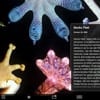Photo credit: Illustration by Christopher Serra |
McGill: Rating won’t help teachers or kids
The State Education Department has mandated a new evaluation scheme for New York‘s teachers. In what Gov. Andrew M. Cuomo describes as a “groundbreaking” move, everyone now will be rated on a 100-point scale that relies heavily on classroom observations and students’ test scores.
What could be wrong with that?
Pretend you want to evaluate 150 people in your organization. You have three objectives. Assure a high level of effectiveness. Constantly improve everyone’s performance. Screen out anyone whose efforts aren’t acceptable.
You want to base your evaluation plan on several principles. You know that performance improves when people collaborate and when they get good coaching. Good coaches take information from multiple sources and use it to give considered feedback. Their charges get ample opportunity to practice under supervision. Evaluators also need standards and strong evidence to hold employees accountable.
Most of the people in your organization want to succeed. A few are truly exceptional. A larger number have mixed strengths and weaknesses. A smaller group is less competent. Everyone works independently much of the time. You don’t have the resources — enough supervisors or time, for example — to give everyone the continuous, thorough feedback needed to change complex behavior intentionally. So you focus your energies.
Some of your people are relatively new. They need more support and mentoring. You get several supervisors to collaborate in observing these newcomers and in working to bring them along. You’re less interested in comparing them than in whether each is becoming fully proficient — and then getting even better .
Some people are more expert. You check in on them less often to be sure they’re meeting core standards, cooperatively plan for their development, and offer them opportunities to hone their skills and absorb emerging knowledge about their field. Again, you’re less interested in how they might rank and more in their staying vibrant and continuing to grow.
You know from your periodic checks and from informal feedback that some folks aren’t measuring up. Supervisors either collaborate to help them upgrade their performance or develop extensive evidence for their dismissal.
That’s effective evaluation in a rational world. Not in the world of Albany. Albany wants to rank people relative to one another.
But why?
If the point is to help them improve, they need insightful advice and good coaching, not numerical rankings. If it’s to screen out less competent teachers, the only relevant yardstick is whether performance is up to standard. Who cares whether Ms. Jones is number 34, 35 or 36 out of 150?
The state’s rationale is that the metrics will drive people to compete for better scores. But what’s the point when the numbers lack meaning? Everyone knows that standardized tests aren’t good measures of who’s a good teacher, for example. Few, if any, researchers believe they can be used to make fine distinctions among practitioners, as the state plan tries to do.
Regardless, quantification is the name of today’s game. Student test results or classroom observations determine at least 71 points of a teacher’s score. The local schools control the remaining 29 points, but they have to be divided up in some set way: so many for planning, so many for taking part in professional activities, and so on.
This numbers game already drives teachers to spend increasing time prepping their kids for exams at the expense of other learning, and to play the system so they can amass points strategically. It’ll discourage collaboration, as well. As one veteran recently said, “Why should I do anything that could help someone else get a higher score than I do?”
Meanwhile, no rigid scoring formula will anticipate all possible situations. Let’s say Ms. Smith’s special needs kids are constantly the brunt of her dark sarcasms when nobody’s watching. That’s unacceptable. Whatever her strengths, credible student and parent feedback should lead supervisors to judge her performance inadequate. In Albany‘s 100-point world, however, she may well pile up enough points to be “proficient.” All she has to do is deliver a coherent lesson in front of an observer, produce decent test scores and strategically get a few more points here and there.
In short, the supposed strengths of this one-size-fits-all approach are really weaknesses. The “objective” numbers don’t judge people accurately. One state-wide evaluation framework doesn’t make sense for every school, and this one restricts the human judgment that’s essential to effective evaluation.
This is teacher appreciation week. In place of well-meaning sentiment, New York State should appreciate its teachers meaningfully. Rather than impose its uniform evaluation template on everyone, it should enable districts to develop their own plans and their capacity to evaluate effectively. A real service to teachers would be to help them understand whether teaching is the right career for them and, if it is, how to do an even better job of developing the determination, initiative, and thinking skills standardized tests can’t measure.
Michael McGill, superintendent of the Scarsdale Public Schools, is participating in a panel about the misperceptions and realities of the state’s teacher evaluation system on Saturday, May 12, at Bank Street College in Manhattan.

















 Summer reading tips from NEA (pdf) available in
Summer reading tips from NEA (pdf) available in 